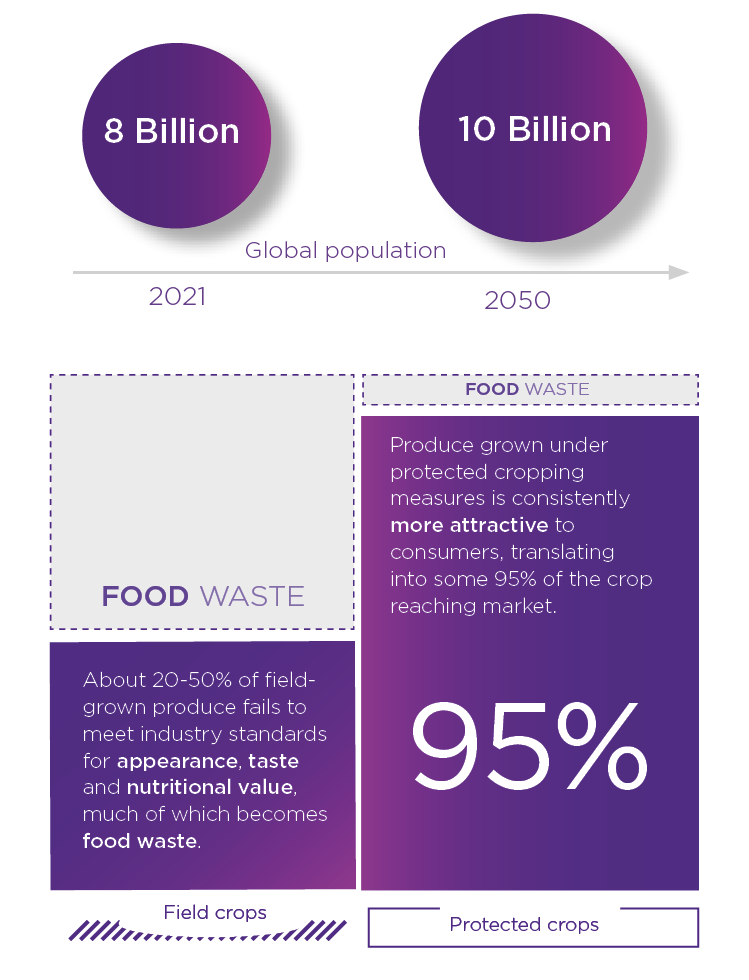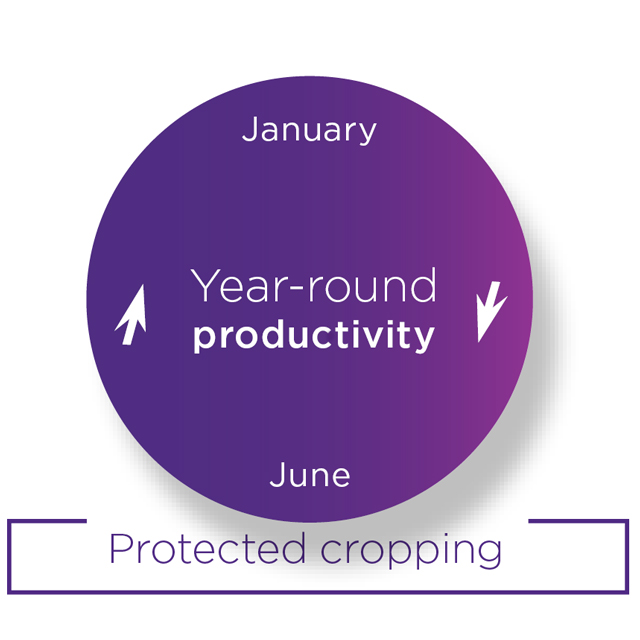World population is expected to grow by more than a third by 2050.
Climate change, natural disasters, changing consumer trends, digital disruption and the COVID pandemic, as well as population growth, all reinforce the need for the agrifood sector to shift significantly and do so within a rapidly changing landscape and diminishing timeline.
Approaches regarding where and how we grow, produce, harvest, distribute and consume food must adapt to achieve and sustain the food and nutritional security of 10 billion people on Earth by 2050.

This challenge is exceedingly complex and multidimensional.
Approaching any solution will require the combination of wide-ranging resources, leading knowledge, and capability advanced through global partnerships spanning industries, governments and communities, in addition to research and teaching organisations such as universities.
Potential solutions must be driven by the development of new knowledge, practice and technologies that are fit-for-purpose, perform effectively and can be readily adopted for continuing application by industry, with feasible and available support and training.
Societal impact
Protected cropping is an inevitable trajectory with societal, economic and environmental benefits and has the potential to transform products/production systems for domestic and global agrifood markets.
It applies controlled facilities for growing plants, regardless of external conditions and climatic extremes. Advantages of protected cropping are compelling, and include:
- Innovating, developing and growing existing and high value crops and products as part of modern manufacturing and new markets.
- Year-round supply
- Water efficiency gains of up to 800% in contrast to outdoor farming
- Systems that are more than 500% water efficient (crop yield/litre) through rainwater capture and recycling.
- Reduced food waste — only 50–80% of field-grown crops meet standards for safety, appearance, taste and nutritional value, compared to 95% of crops grown in a controlled environment.
- Decreased impact on land and biodiversity (high crop output in smaller areas and reduced use of pesticides).
- Improved management of growing systems (zero emission energy source, optimised light, heat, agronomy and physiology in controlled environments, circular and closed loop designs).
- Enabling tools and technologies (e.g. real-time crop decision making tools, integrating robotics and automation, advanced sensor technology).
- More efficient supply chains and increased export potential.
Program plan and solutions
The UQ Global Challenge Research Network in Protected Cropping is a multidisciplinary initiative that applies a holistic and partnered approach to this agrifood grand challenge through an extensive program of research, development and extension activities.
Internally, the network is comprised of expert UQ scientists in fields of biology, chemistry, materials, hydrology, energy, design, engineering, architecture, robotics, automation, data modelling, business and economics, social science, policy and skills.
The wider network builds on existing and new partnerships with state and federal government research authorities, multinationals, small-to-medium sized businesses, grower groups and industry bodies, not-for-profit organisations, and technology start-ups, who share the desire to tackle this global challenge through knowledge exchange and collective activities.
UQ recognises that challenges of such scale can only be approached through assembling and harnessing diverse sets of deep knowledge and experience.
We achieve this by leveraging our vast networks, facilities, and infrastructure, in addition to creating suitable environments for all stakeholders to congregate and express ideas for the co-creation of viable and applicable solutions.

